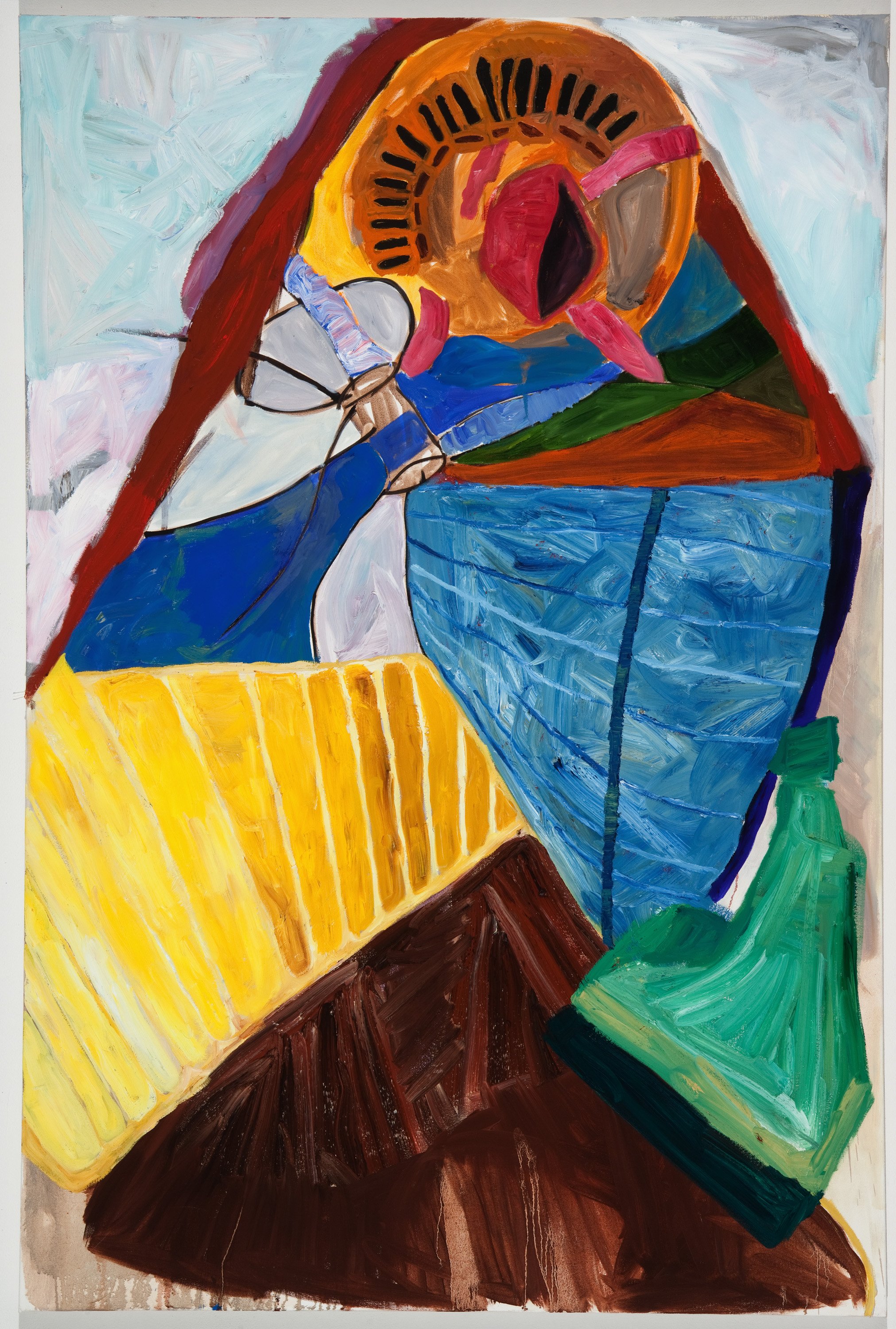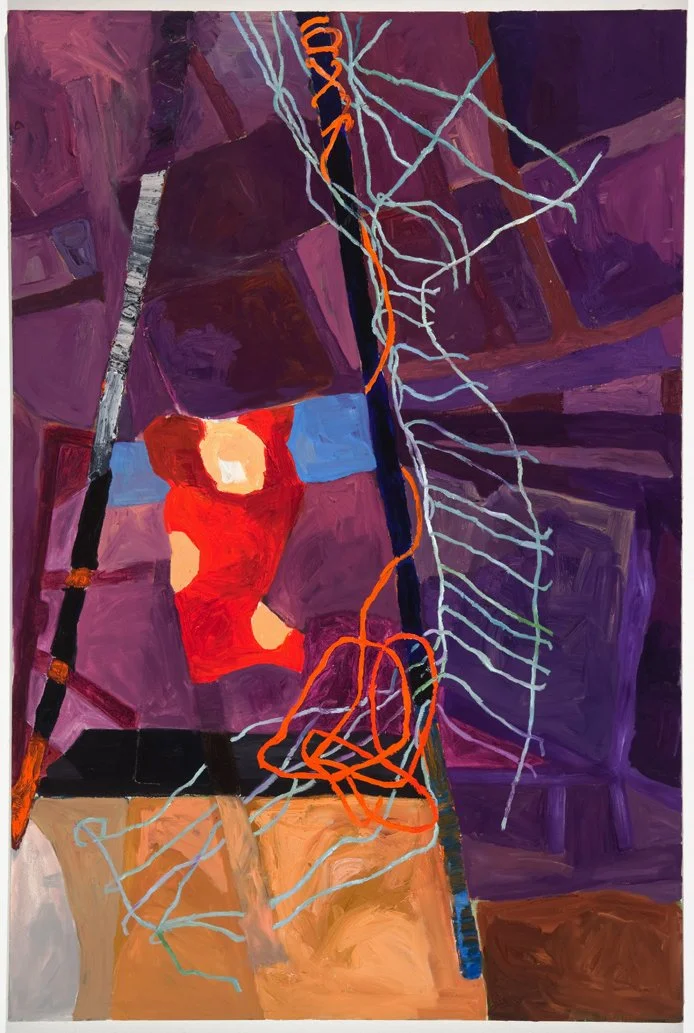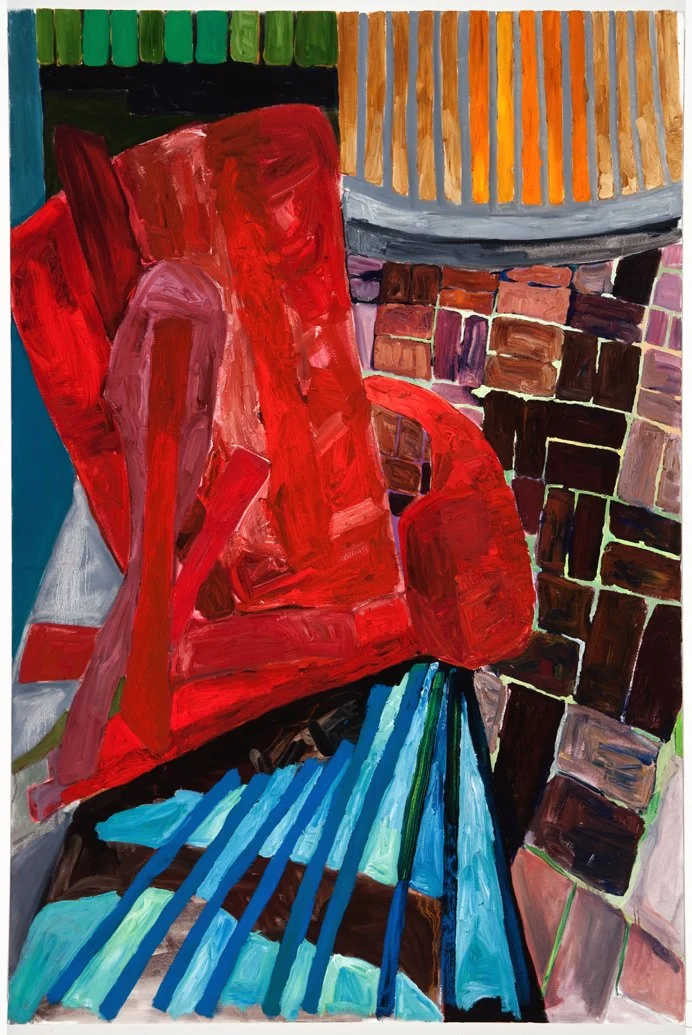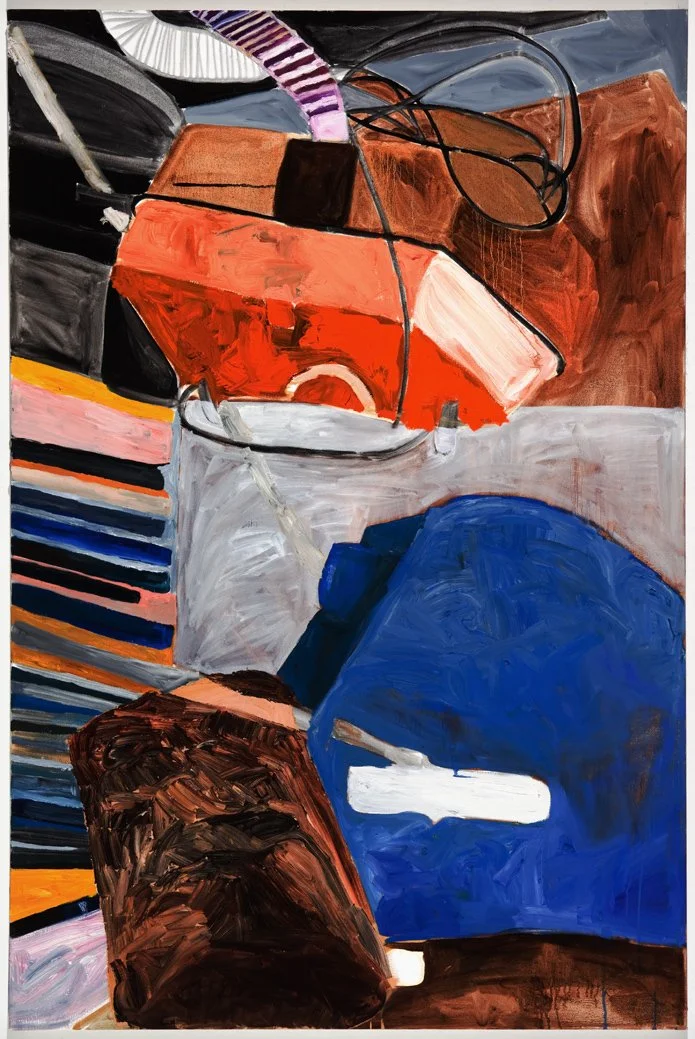The Center Cannot Hold
Brooke Pickett's paintings are big — as large as 10 feet tall — yet for all that, they are not heroic or any other one thing. They have all sorts of things happening at once. Like a dream journey through a familiar landscape where ordinary shapes and forms take on a strange hallucinatory life of their own, they are simultaneously intriguing and unsettling. Painted in big, gloopy swatches of saturated pomegranate, avocado, blueberry, goldenrod and rust, objects that are typically homey — things that may have started out as table lamps, stools, bits of rubbish or maybe ladders — mutate into strange visual tone poems taut with suspense and an incipient sense of wonder. In this Contemporary Arts Center expo, we see this in Sorrow Floats, where a glowing lampshade becomes a beacon in a turbid sea of subconscious intrigue. Part of it has to do with those rich, psychically fraught colors applied in loose brush strokes that can seem very loose compared to Robert Gordy's tightly delineated canvases upstairs at the CAC. But Pickett's compositions are otherwise somewhat tight once you get used to the surprising exuberance of pigments that seem to revel in their own woozy plasticity. In Mississippi Goddam (pictured), green and brown patches evoke the leafy farms and forests of the South, but vertical bars and ruptured reds suggest trouble, maybe even oppression, lurking beneath the lush arboreal facade. Closing in Against the Weather is more claustrophobic, a wavy, netlike mesh of pale, pulsating blobs that evoke the work of Philip Guston, as noted in Kathy Rodriguez's long, thoughtful review on NolaDefender.com. But, ultimately, I think of the "center cannot hold" in the title, a line popularized in William Butler Yeats' poem The Second Coming, but later associated with Joan Didion, whose writing was always really about her thought processes, which she somehow made fascinating regardless of her subject. So too are Pickett's paintings fraught with their own inner processes, and it is to her credit that they inspire empathy with their silent visual soliloquies.— D. Eric Bookhardt
Call and Response oil on canvas, 60 x 48 in, 2014
A Warning Sign oil on canvas, 60 in x 48 in, 2014
I Don't Have Any Role Models oil on canvas, 60 x 48 in, 2014
Flotation Devices oil on canvas, 2014
Closing In Against The Weather oil on canvas, 2014




